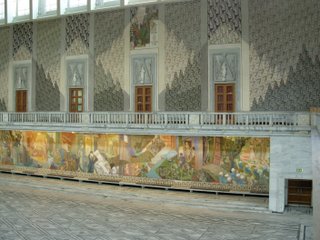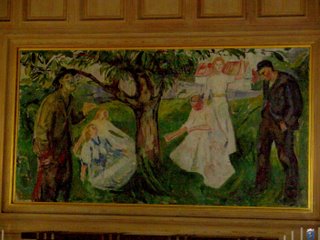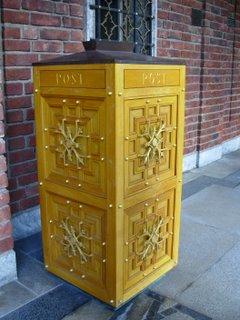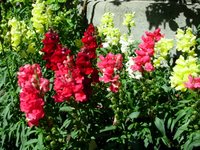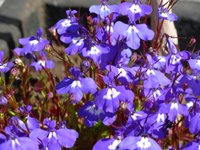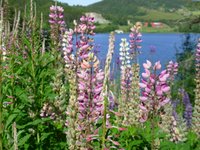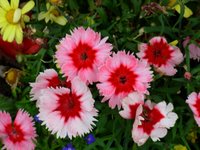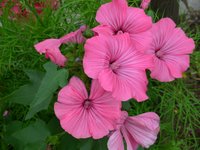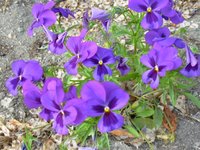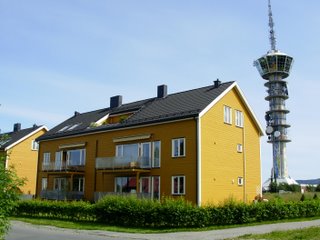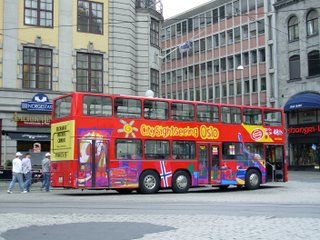
The Information Centre located right in front of the train station and Karl Johans Gate on the opposite side of the Information Centre. 'Gate' is street in English. It is the Norway's best known and busiest street with many different types of shops on both sides and is named after the king of Norway and Sweden, Karl Johan (1818-44). Walking straight on the road from the train station direction, it brings you to the Royal Palace standing on the hill at the end of Karl Johans Gate.



The lives of Oslo people on the raining day.

Mushroom fountain in front of the National Theatre. Two animals hugging statue.


The Norwegian Parliament and the food and drink stalls in front of the parliament at the corner of Karl Johans Gate and Rosenkrantz Gate.
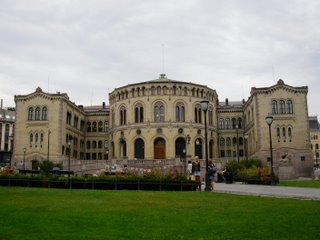

Tourist shop at Aker Brygge and Aker Brygge Shopping Centre.

4-side Clock Tower and The Eternal Peace-Flame at Aker Brygge









